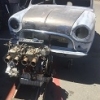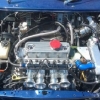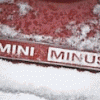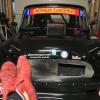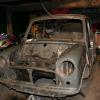Due to the mass of metal added quite high in the shell, a roll cage actually increases the risk of having a roll. A standard Mini is exceedingly difficult to roll, like most properly proportioned modern cars (SUVs or "Stupid Uncouth Vehicles" excepted!) because the centre of mass is low. It will slide sideways before rolling, unless the wheels trip up on something like a kerb.
There once was an argument about whether the RNLI should buy self-righting or non self-righting lifeboats. The self-righting variety turns over more easily than the non self-righting kind. I seem to recall it being debated in parliament in the early 1960s, not that parliament had the competence to decide. Much more technical than duck islands.... That is just typical of the dilemma surrounding many safety systems and devices. There is almost always a downside.
Concerning the specifics of the Mini, I have seen a fair number that had been used in crash research, and would suggest that the main need is for subframe intrusion protection, by reinforcing the toeboard area. extending to the forward part of the inner sills. (That would combine neatly with the reinforcing needed to convert to solid mounts.) Subframe intrusion tends to leave you permanently crippled, possibly with no feet and lower legs, or trapped in a burning car, so is best avoided. (I have seen dummies severely trapped, and with damaged feet.) Secondly is the official side impact protection included in later models, in the doors. Just fit later doors. As has already been said, they stand up to being rolled fairly well. Flip fronters have a vastly increased set of problems in a frontal impact, for no gain at all, so please don't do it!
Again, like the lifeboat dilemma, the rubber mounted subframe is probably less likely to trap or remove the driver's feet (possibly the true reason for introducing it, as legislation about frontal impact protection was coming), but as we know, it ruins the handling.




